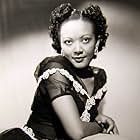IMDb RATING
6.9/10
3.3K
YOUR RATING
Assistant district attorney Cleve Marshall falls for the mysterious Thelma Jordon when she seeks help solving robberies of her aunt's estate.Assistant district attorney Cleve Marshall falls for the mysterious Thelma Jordon when she seeks help solving robberies of her aunt's estate.Assistant district attorney Cleve Marshall falls for the mysterious Thelma Jordon when she seeks help solving robberies of her aunt's estate.
Kasey Rogers
- Dolly
- (as Laura Elliot)
Gertrude Hoffman
- Aunt Vera Edwards
- (as Gertrude W. Hoffman)
Kate Drain Lawson
- Clara
- (as Kate Lawson)
- Director
- Writers
- All cast & crew
- Production, box office & more at IMDbPro
Storyline
Did you know
- TriviaThe actors portraying Wendell Corey's character's children are Corey's real life children, Jonathan Corey and Robin Corey.
- GoofsCleve Marshall sits down at the desk opposite Miles Scott and says, "Can't talk till I have another drink." Scott picks up the whiskey bottle and pulls out the cork before handing it to Marshall. Marshall picks up the bottle and again pulls out the cork.
- Quotes
Thelma Jordon: I'm no good for any man for any longer than a kiss!
- Alternate versionsThis film was published in Italy in an DVD anthology entitled "L'uomo con il mantello", distributed by DNA Srl. The film has been re-edited with the contribution of the film history scholar Riccardo Cusin. This version is also available in streaming on some platforms.
- ConnectionsFeatured in The Silver Screen: Color Me Lavender (1997)
Featured review
One of the noir cycle's best titles ushers in one of its better offerings. Barbara Stanwyck's assumption of the title role, of course, gives the picture a running start. She had worked with Billy Wilder and helped to shape the cycle in Double Indemnity, and was to work with Fritz Lang in Clash by Night and even Anthony Mann in The Furies (a western, yes, but a dark one), all key noir craftsmen. Here her director is the no less central Robert Siodmak, and her performances in this and the other titles cited (plus The Strange Love of Martha Ivers and at least five other suspense films of the 1940s and 1950s) cement her sobriquet as the First Lady of Film Noir.
Like her Martha Ivers, Stanwyck's Thelma Jordon has a wealthy old aunt (Gertrude Hoffman, who the next year in Caged would steal that movie from some very tough competition). One evening the niece strolls into the District Attorney's office with a story about prowlers and burglars (explaining that she bypassed the police because `My aunt is eccentric, and uniforms upset her'). She tells her tale to an inebriated assistant D.A., Wendell Corey, who's drinking to escape his embittered marriage. Stanwyck lends a sympathetic ear, and they start seeing one another on the sly.
When the aunt, inevitably, is found shot, Stanwyck calls not the police but Corey, and in a tense and extended scene of panic, he helps her cover up evidence that may incriminate her. When she emerges as the prime suspect, he also arranges for his boss to be disqualified, so he can sabotage the prosecution. Stanwyck (after a beautifully orchestrated processional from jail to courthouse) is acquitted. But her past has begun to catch up with her, complete with a shady lover who keeps turning up and who shoves the compromised Corey out of the picture. But never trust a duplicitous woman, particularly if she's within easy reach of a dashboard cigarette lighter....
Siodmak (with Ketti Frings, who wrote the screenplay) starts the movie so slowly that it looks like it's going to shape up into a routine, adulterous triangle. But he's just laying his groundwork. He keeps Stanwyck behind ambiguous veils, too, stripping them off one by one. Corey proves just right as the dupe, the fall guy (as Fred MacMurray proved right in Double Indemnity); a skillful character actor who always submerged his own personality in the roles he played, he tended to look a little pallid in leading-man roles he took next to the female stars against whom he was pitted.
Siodmak may be the most ruminative of the great noir auteurs he eschews flash for solid, patient construction. But when it's time for the big set-pieces (the nocturnal panic in the dark old mansion, the perp walk, the shocking flourish of violence at the end courtesy of Stanwyck and that cigarette lighter), he does them full justice. The File on Thelma Jordon falls just short of the summa-cum-laude distinction of his The Killers, and maybe of Criss Cross and even Christmas Holiday, too. But with Stanwyck's drawing upon the full fetch of her talents, it's an indispensable moment in the noir cycle.
Like her Martha Ivers, Stanwyck's Thelma Jordon has a wealthy old aunt (Gertrude Hoffman, who the next year in Caged would steal that movie from some very tough competition). One evening the niece strolls into the District Attorney's office with a story about prowlers and burglars (explaining that she bypassed the police because `My aunt is eccentric, and uniforms upset her'). She tells her tale to an inebriated assistant D.A., Wendell Corey, who's drinking to escape his embittered marriage. Stanwyck lends a sympathetic ear, and they start seeing one another on the sly.
When the aunt, inevitably, is found shot, Stanwyck calls not the police but Corey, and in a tense and extended scene of panic, he helps her cover up evidence that may incriminate her. When she emerges as the prime suspect, he also arranges for his boss to be disqualified, so he can sabotage the prosecution. Stanwyck (after a beautifully orchestrated processional from jail to courthouse) is acquitted. But her past has begun to catch up with her, complete with a shady lover who keeps turning up and who shoves the compromised Corey out of the picture. But never trust a duplicitous woman, particularly if she's within easy reach of a dashboard cigarette lighter....
Siodmak (with Ketti Frings, who wrote the screenplay) starts the movie so slowly that it looks like it's going to shape up into a routine, adulterous triangle. But he's just laying his groundwork. He keeps Stanwyck behind ambiguous veils, too, stripping them off one by one. Corey proves just right as the dupe, the fall guy (as Fred MacMurray proved right in Double Indemnity); a skillful character actor who always submerged his own personality in the roles he played, he tended to look a little pallid in leading-man roles he took next to the female stars against whom he was pitted.
Siodmak may be the most ruminative of the great noir auteurs he eschews flash for solid, patient construction. But when it's time for the big set-pieces (the nocturnal panic in the dark old mansion, the perp walk, the shocking flourish of violence at the end courtesy of Stanwyck and that cigarette lighter), he does them full justice. The File on Thelma Jordon falls just short of the summa-cum-laude distinction of his The Killers, and maybe of Criss Cross and even Christmas Holiday, too. But with Stanwyck's drawing upon the full fetch of her talents, it's an indispensable moment in the noir cycle.
- How long is The File on Thelma Jordon?Powered by Alexa
Details
Box office
- Gross worldwide
- $63
- Runtime1 hour 40 minutes
- Color
- Aspect ratio
- 1.33 : 1
Contribute to this page
Suggest an edit or add missing content

Top Gap
By what name was The File on Thelma Jordon (1949) officially released in India in English?
Answer
























